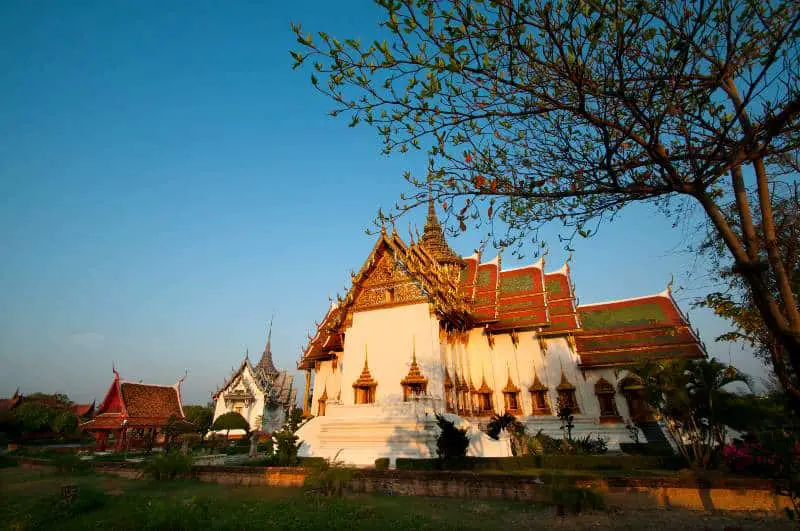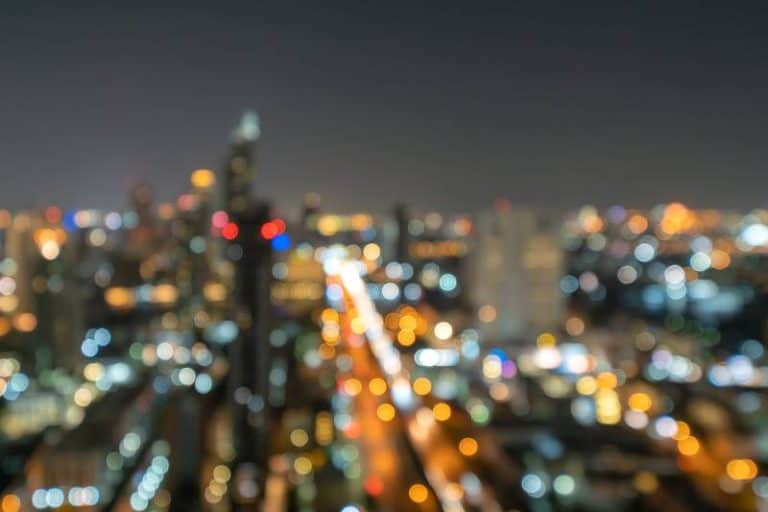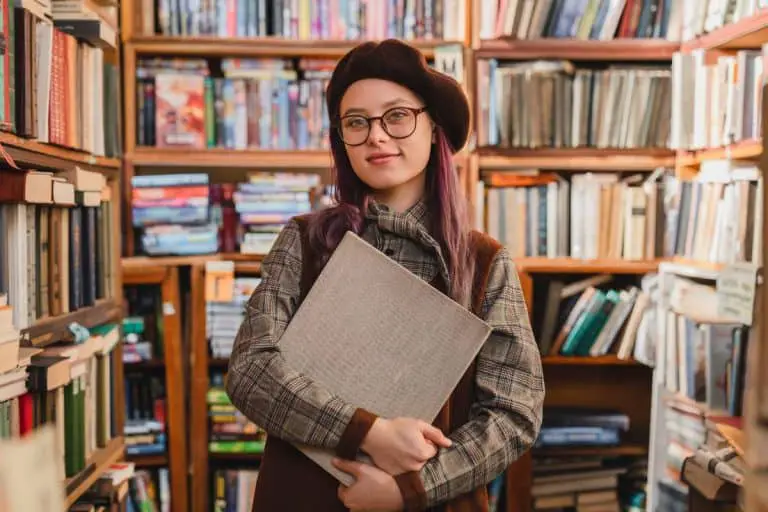Best Museums in Thailand: A Cultural Exploration
Are you ready to explore the best museums in Thailand? With its rich culture and colorful past, it’s no surprise that Thailand is home to some of the world’s most incredible museums. From contemporary art galleries to traditional historic sites, there are plenty of opportunities to expand your knowledge and appreciate Thai history on a deeper level. Whether you’re looking for interactive exhibits or an opportunity to learn more about the country’s religious heritage, this list has something for all kinds of travelers. Read on as we cover the top museums in Thailand – get ready for some serious cultural enrichment!
The year 2020 saw a substantial decline in the number of tourist arrivals in Thailand, with the figure standing at approximately 6.7 million. This marked a significant departure from the tourism trends of previous years. Despite the overall decrease, many of these visitors still flocked to the country’s diverse array of museums, reflecting the enduring appeal of Thailand’s rich cultural and historical attractions.
Key Takeaways
- The Art Gallery of Pattaya stands out as an engaging and immersive museum experience, allowing visitors to not just view but also interact with and become part of the artwork. This dynamic approach to art presentation promotes creativity and involvement, making it a distinctive destination for art enthusiasts and general visitors alike.
- The concept of involving visitors directly in the artwork provides a fun, memorable, and shareable experience, making each visit unique.
- The gallery’s diverse range of themed exhibits ensures there’s something for everyone, from optical illusions to natural wonders and historical depictions. This variety makes it an inclusive art space, suitable for families, groups of friends, couples, and individuals, offering an array of experiences that cater to different interests and preferences.
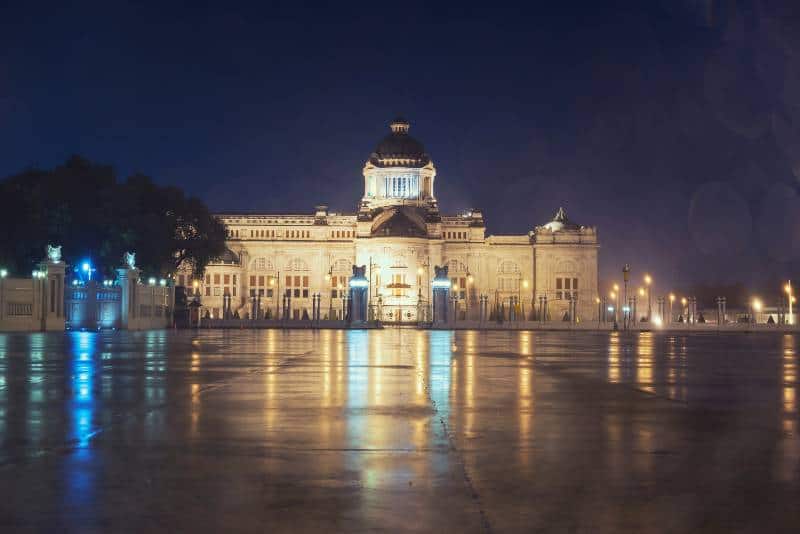
Bangkok National Museum
The Bangkok National Museum, located in the heart of Thailand’s bustling capital city, Bangkok, is an extraordinary institution that serves as a reservoir for Thai heritage, culture, and arts. Established in 1874 by King Rama V, it holds the prestigious title of being the first public museum in Thailand and is the largest collection of Thai art and artifacts in the country. Nestled within the grounds of the grand former 18th-century Wang Na Palace, the museum spans numerous buildings, each home to a fascinating collection that tells the rich, complex tale of Thai history and civilization, extending from the prehistoric era up to the present day.
The importance of the Bangkok National Museum extends beyond its size and age. It provides locals and international visitors alike with a deep insight into the diverse cultural influences that have shaped Thailand, from the early animist beliefs and Indian-inspired Khmer empires, through the golden age of the Ayutthaya Kingdom, to the modern Buddhist monarchy era. This institution plays a vital role in preserving, educating, and promoting Thai history, culture, and art, making it a must-visit destination for anyone seeking to understand the true essence of this vibrant Southeast Asian nation.
Highlights and Must-Sees
The Bangkok National Museum boasts an impressive array of exhibits, and several stand out as must-see attractions. Starting your journey at the Siwamokhaphiman Hall, you will be able to delve into the history of Thailand from prehistoric times to the Sukhothai and Ayutthaya periods. This hall is filled with a collection of exceptional stone sculptures, including the famous stucco panels from the stupa of Wat Mahathat in Lopburi.
Next, the Buddhaisawan Chapel is a highlight that shouldn’t be missed. Built-in 1787, this historic structure houses the revered Phra Buddha Sihing image, one of the most significant Buddha statues in Thailand. The richly decorated walls of the chapel, featuring intricate murals depicting scenes from the life of Buddha, are another remarkable feature of this sacred site.
For those interested in religious art, the Red House or Thai Hoa House is an enchanting wooden pavilion that showcases a wealth of religious artifacts. It was originally built for Queen Sri Suriyendra, the wife of King Rama II, and it is an architectural gem in itself, epitomizing traditional Thai craftsmanship.
In the South Wing, you’ll find a dazzling collection of Chinese ceramics dating back to the Tang dynasty. The ceramics provide an interesting contrast to the Thai artifacts and reflect the historical trade relationships between Thailand and China.
Finally, do not miss the Ivory Room in the North Wing. It contains a staggering collection of carved ivory items, including the magnificent howdah (an elephant saddle), which is a testament to the incredibly detailed craftsmanship of Thai artisans.
Remember that the Bangkok National Museum is more than just a collection of artifacts; it is an institution where the past and present converge, providing us with a deep understanding and appreciation of Thai history, culture, and artistic heritage. As such, it is a place to explore at leisure, with each artifact, room, and building telling a unique story of this fascinating country.
Museum of Siam
The Museum of Siam, situated in the historical Rattanakosin area of Bangkok, is a unique institution that charts an unconventional path compared to traditional museums. Inaugurated in 2007, the museum is set within a remarkable neoclassical building originally constructed in 1922, which was once the home of the Ministry of Commerce. Rather than presenting a chronological view of Thai history, the Museum of Siam takes an innovative approach by focusing on the multifaceted identity of Thailand and its people, thus carving a special niche for itself among Thailand’s museums.
The Museum of Siam, through its creative and interactive exhibits, explores the question “What does it mean to be Thai?” It does this by examining different aspects of Thai culture, beliefs, conflicts, traditions, and changes over the years. In this respect, the museum serves not only as an educational resource but also as a platform for self-reflection and dialogue, encouraging visitors to question and understand their perception of ‘Thainess’. By presenting the evolution of Thai society and culture through various influences and changes over time, the Museum of Siam seeks to foster a sense of appreciation and understanding of the dynamic and diverse identity of Thailand.
Highlights and Must-Sees
One of the key features of the Museum of Siam is its embrace of modern technology, making it particularly engaging for younger visitors. The museum employs a variety of interactive displays, video presentations, games, and multimedia to bring the story of Thailand’s cultural evolution to life.
The museum journey starts with the “Decoding Thainess” exhibition. This immersive experience provides an intriguing and thought-provoking exploration of what being Thai means. The exhibition is a blend of history, culture, tradition, and modernity, seeking to decode the complexities of Thai identity.
The “Typically Thai” exhibit is another must-see. It uses interactive displays to explore the stereotypes and symbols typically associated with Thailand, from the famed Thai smile to the ubiquitous tuk-tuk. By examining these symbols, the exhibit offers an insightful look into how Thailand is perceived both by Thais and by the rest of the world.
One of the most captivating installations is the “Change” room, a multimedia presentation that reflects on the rapid societal and environmental changes in Thailand over the past few decades. It’s a thought-provoking room that encourages visitors to reflect on the consequences of development and modernization.
Another fascinating feature of the Museum of Siam is the “Village Life” exhibit, which delves into Thailand’s agrarian roots, and the “City Life” exhibit, which showcases the shift from rural to urban lifestyles and the impact of this transition on Thai society and culture.
Lastly, don’t miss the opportunity to explore the museum’s building itself. The historic structure, with its neo-Palladian style, offers a contrast to the contemporary exhibitions inside, reminding visitors of the blend of traditional and modern elements that shape Thailand.
Overall, the Museum of Siam offers an intriguing, interactive, and immersive exploration of Thai culture and identity that goes beyond the usual historical narrative. It invites visitors not just to observe, but to question, discuss, and engage with the concept of Thainess. This approach makes the Museum of Siam a must-visit for anyone seeking a deeper understanding of the cultural and societal fabric of Thailand.
Jim Thompson House
The Jim Thompson House is a popular museum and a remarkable architectural gem located in the heart of Bangkok, Thailand. This extraordinary venue was the residence of James H.W. Thompson, an American architect who fell in love with Thailand during his service in the region during World War II. After the war, Thompson decided to reside permanently in Bangkok and dedicated himself to the revival of Thailand’s then-declining silk industry. His passion for Thai culture, art, and architecture resulted in the creation of this beautiful traditional Thai-style complex.
Constructed in 1959, the Jim Thompson House incorporates six antique teakwood houses that were carefully dismantled and brought from different parts of Thailand. The houses, which are an exquisite blend of traditional Thai and modern Western design elements, were reassembled on the banks of the Khlong Saen Saep canal, creating a peaceful sanctuary in the bustling city. The complex’s unique design reflects Thompson’s profound appreciation for Thai culture, while his contributions to the revival of the silk industry in Thailand played a significant role in bringing international recognition to Thai silk, leading him to be often referred to as the “Thai Silk King”.
Highlights and Must-Sees
A visit to the Jim Thompson House starts with a guided tour that walks you through Thompson’s life, his love for Thai silk, his intriguing disappearance in 1967, and his extensive Asian art collection. This tour, which is available in multiple languages, provides an informative insight into Thompson’s unique contribution to Thailand’s cultural and economic heritage.
The house itself is an architectural marvel. Its design incorporates elements of traditional Thai architecture, such as elevated structures to protect from flooding, open-air walkways, and beautifully decorated rooms. Each corner of the house exhibits a harmonious blend of Western and Eastern design philosophies, which were central to Thompson’s aesthetic vision.
The Art and Antique Collection is another must-see. As an avid collector, Thompson gathered an impressive range of Southeast Asian art pieces, including Thai, Burmese, Cambodian, and Chinese sculptures and paintings, which are displayed throughout the house. Notable pieces include the 17th-century stone Buddha from the Ayutthaya period and a remarkable collection of Thai Benjarong porcelain.
The beautiful garden surrounding the house is another highlight, providing a tranquil green oasis in the midst of urban Bangkok. The garden’s design, influenced by Thompson’s architectural background and love for nature, features a pond, a variety of tropical plants, and lovely paths to stroll along.
A visit to the Jim Thompson House would be incomplete without exploring the on-site Silk Shop. Here, visitors can appreciate and purchase high-quality Thai silk products, reflecting the vibrant colors and exquisite textures that made Thai silk world-renowned.
Lastly, the Jim Thompson House offers a delightful restaurant and café where visitors can indulge in authentic Thai cuisine or a refreshing drink, thus rounding off their visit in the most delicious way.
The Jim Thompson House offers a remarkable glimpse into the extraordinary life of Jim Thompson – his love for Thai culture and his impact on the Thai silk industry. It showcases the East-meets-West concept that Thompson so passionately promoted and is highly recommended for those who appreciate art, architecture and the compelling stories of notable figures.
Ayutthaya Historical Study Centre
Located on the historical city island of Ayutthaya in Pratu Chai Sub-district, the Ayutthaya Historical Study Center (AHSC) stands as a key research institution dedicated to the study of Ayutthaya’s history. This crucial cultural center is nestled along Rojana Road, virtually opposite the renowned Chao Sam Phraya Museum and adjacent to Rajabhat University.
Established with funding from the Japanese Government, the AHSC is a testament to the period from 1351 to 1767 when Ayutthaya, the then-capital of Siam, was a flourishing and influential kingdom. This center offers an insightful exploration into this historical period, although it does not house a library or a selection of books about the city’s history.
The AHSC’s creation is interwoven with Japanese-Thai diplomatic relations and historical restoration efforts, as detailed by David Potter in “Japan’s Foreign Aid To Thailand and the Philippines.” Initiated by the Bangkok-Japanese Chamber of Commerce in 1984, the project aimed to restore the 17th-century Japanese trading community site in Ayutthaya. The center was originally scheduled for inauguration in 1987 by the Japanese Prime Minister, but the process underwent multiple revisions due to a series of negotiations and protests. The final design of the AHSC was altered to reflect a blend of Thai architectural elements, embodying a successful collaboration of Thai and Japanese efforts.
The heart of the AHSC is the modern exhibition hall located on the upper floor of the two-story building. It is divided into different thematic sections representing Ayutthaya’s multifaceted historical identity: Ayutthaya as a capital, a port city, a central state, and a depiction of traditional village life.
Visitors can admire three meticulously crafted models that form the centerpiece of the exhibition. The intricately detailed model of the Grand Palace and Wat Phra Sri Sanphet stands out as a remarkable representation of Ayutthaya’s architectural grandeur, alongside the models of Wat Chai Watthanaram and the Elephant Kraal.
The left wing of the exhibition brilliantly supplements the display at the Ayutthaya Tourist Center, casting light on Ayutthaya’s role as an international trade hub. The carefully designed panels offer a wealth of informative content that adds depth to visitors’ understanding.
The middle wing celebrates Ayutthaya’s status as a central state, enveloped in a stunning showcase. Meanwhile, the right wing offers a glimpse into rural life during the Ayutthayan era, including an engaging model of a rural village.
All in all, the Ayutthaya Historical Study Center offers a compelling journey into the rich historical tapestry of Ayutthaya, making it a must-visit for anyone intrigued by the diverse facets of Thai history.
Chiang Mai National Museum
Nestled close to the historic Wat Jet Yod, the Chiang Mai National Museum is the principal museum of Northern Thailand. Endowed with the patronage of Their Royal Majesties, the King and Queen, it serves as an essential repository of the region’s cultural and historical heritage. The museum was significantly renovated in 1996 to commemorate the 700th anniversary of Chiang Mai’s founding, resulting in an expanded and better-structured exhibition.
Housed in a grand, two-story edifice reflecting the traditional Lanna style, the museum embodies the region’s architectural aesthetic with its distinctive roof design, reminiscent of a bird spreading its wings. Visitors are invited to embark on a journey through Chiang Mai’s rich timeline, from its earliest origins to its contemporary development, across six thematic sections.
Highlights and Must-Sees
The museum experience begins with an exploration of the region’s natural and cultural roots, showcasing the northern ecology and geography, as well as archaeological evidence of prehistoric settlements. Visitors are then guided through the illustrious history of the Lanna Kingdom, starting from Chiang Mai’s establishment in 1296, its capture by the Burmese in 1558, and its subsequent liberation with the assistance of the King of Siam in 1769.
The narrative then transitions to the brief interlude between Chiang Mai’s emancipation from Burmese rule and its re-establishment in 1782 under the Siamese King’s control. Ascending to the museum’s second floor, visitors will find a dedicated exhibit hall chronicling the Lanna Kingdom’s trade and economic practices leading up to its integration into Thailand in 1939.
The subsequent section brings the contemporary aspects of Chiang Mai to the fore, showcasing photographs and artifacts that depict its modern agricultural and industrial evolution, and the city’s interconnectedness with national and global communities.
The journey concludes with an exhibition focusing on the distinct artistic style of the Lanna Kingdom. This exhibit boasts a wide array of artifacts, ranging from those dating back to the 13th century to contemporary artworks, thus offering a vivid portrait of the region’s evolving artistic expression.
Erawan Museum
Prominent for its colossal three-headed elephant art sculpture that graces its exterior, the Erawan Museum is both a popular tourist attraction and a revered shrine for many believers. The first and largest hand-carved sculpture of its kind in the world, this elephant is an incredible sight to behold.
Construction of the Erawan Museum began in 1994, and it opened its doors to the public in 2003. The museum, inclusive of the elephant sculpture, towers at a height of 43.6 meters, equivalent to a 14-story building. The sculpture itself is impressively large, measuring 12 meters in width and 39 meters in length. The body of the elephant weighs a staggering 150 tons, while the head alone tips the scales at 100 tons.
Adding to the elephant’s magnificence is its outer layer, which is adorned with sheets of copper. The copper sheets, each 1.2 millimeters thick, come in varying sizes, from larger sheets measuring 4×8 feet to smaller ones no bigger than the palm of a hand. It took hundreds of thousands of these copper sheets, carefully applied with meticulous craftsmanship, to fully embellish the sculpture’s exterior.
Highlights and Must-Sees
The undeniable highlight of the Erawan Museum is the massive three-headed elephant sculpture. This magnificent piece of art stands as a testament to the power of human creativity and the meticulousness of traditional craftsmanship. Visitors from around the world are invariably captivated by the elephant’s grandeur and the intricate detailing of its copper-clad exterior.
Hellfire Pass Museum
Locally referred to as the Museum of Chong Khao Kad, Hellfire Pass stands as a poignant reminder of the harsh realities of World War II. It is a section of the infamous Death Railway, a project completed under exceptionally cruel conditions by prisoners of war.
Hellfire Pass, where the railway had to be carved through a mountain, was an especially arduous task. Against all odds and using rudimentary tools such as hand drills, picks, and shovels, the POWs and laborers managed to create a passage for the train through solid rock. Completed in 1943 in just six months, this remarkable 500-meter-long passage came at a tragic cost, with numerous lives lost in the process.
Though no longer in use, Hellfire Pass has been transformed into a museum that houses a collection of relevant tools and photographs related to this significant historical event. The museum serves as a solemn reminder of the importance of world peace.
Highlights and Must-Sees
The Hellfire Pass Museum is open daily from 9 a.m. to 4 p.m. However, please note that it and the walking trail are closed on certain dates due to local and national holidays. These include the Songkran Festival (13-15 April), the Royal cremation ceremonies for H.M. the King (25-27 October 2017), H.M. the King’s Birthday (5 December), Christmas Day (24-27 December), New Year’s Eve (31 December), and New Year’s Day (1 January).
The museum offers free admission and provides visitors with a deeper understanding of the extraordinary circumstances surrounding the construction of the Death Railway. This powerful historical site is a must-visit for anyone interested in World War II history and the resilience of the human spirit in the face of adversity.
Bangkok Art and Culture Centre
Situated in the heart of Thailand’s capital, the Bangkok Art and Culture Centre (BACC) stands as the epicenter of Bangkok’s vibrant art scene. A stone’s throw away from the National Stadium BTS Skytrain station, the BACC serves as a dynamic platform for an extensive range of contemporary art, design, music, theatre, and film. Regularly welcoming an array of exhibitions from both local Thai and international artists, it has become a focal point of artistic and cultural expression in the city.
Though still in its growth phase and not yet at par with the established art centers of London and New York, the BACC shows significant potential. Offering free entry to all, it promises a rewarding experience for anyone willing to spend an hour or more exploring its offerings.
Highlights and Must-Sees
Designed to evoke the grandeur of the Guggenheim Museum in New York, the BACC is notable for its sweeping white curvilinear façade and spiraling walkways. Its distinct architecture, standing at the Pathumwan intersection amidst bustling shopping centers, sets it apart as an oasis of art and culture. The center, which opened in 2008, thirteen years after its conception, often features engaging sculptures in its front square, lending an outdoor gallery feel to the location.
The establishment of the BACC was not without its share of challenges, including political hurdles, governmental transitions, and the securing of funding. However, steadfast advocacy ensured its eventual realization, and it remains committed to its mission of fostering an appreciation of art and culture among locals and tourists alike.
Covering over 4,000 square meters of exhibition space, the BACC extends beyond just a museum. It features shops, an art-centric library, and a couple of cafés for visitors to enjoy a refreshing break. All in all, the Bangkok Art and Culture Centre is a beacon of artistic exploration and cultural engagement in Bangkok, well worth a visit for any art enthusiast.
Pattaya City Art Gallery
The Art Gallery of Pattaya is more than just a traditional art space; it’s a vibrant and interactive 3D museum that immerses visitors in the artwork itself. It’s a refreshing and unusual destination, where wall paintings come alive, and visitors become an integral part of the art pieces, stirring their imagination and creativity. With a careful blend of silhouette play and boundary blur, artists have transformed the gallery walls into a canvas of optical illusions, making it seem as if animals are leaping out of the walls or friends are swinging precariously above cascading waterfalls. Whether visiting with family, friends, or as a couple, the gallery promises an entertaining experience filled with laughter, fascination, and memorable photo opportunities.
Highlights and Must-Sees
The Art Gallery of Pattaya encourages visitors to interact with the artworks creatively. Photography is not only permitted but encouraged, as the gallery’s primary aim is to incite fun and engagement with the art. You’ll often find locals and tourists alike striking playful poses and capturing joyful moments amidst the exhibit pieces.
With over 100 artistic works spanning across 10 theme-based wings, including optical illusions, wild animals, natural wonders, ancient history, classical art, and more, the gallery offers an enchanting journey. Each exhibit comes with its unique flair of live effects or surprising twists, making the experience immersive and enjoyable.
Cultural enthusiasts can interact with a painting of the Mona Lisa, even adding a pencil to it and posing as if they’re Leonardo da Vinci himself. For the spiritually inclined, there’s an opportunity to mimic meditation before a grand depiction of Buddha. Animal lovers are given a chance to virtually feed, pet, fly, and swim with wildlife in simulated environments such as the African savannah or the jungles of South America.
And if you wish to embark on a global adventure without leaving the gallery, you can explore the pyramids of Egypt, climb the steps of Machu Picchu, or glide on a gondola in Venice. The Art Gallery of Pattaya is a unique amalgamation of art, creativity, and immersive experiences, promising an engaging visit.
If you’re looking to indulge in some retail therapy, Thailand is a shopper’s paradise! From traditional markets to glitzy malls, there is no shortage of places to go. In fact, the country boasts some of the most vibrant shopping hotspots in the world. So why not check out “Exploring the Vibrant Shopping Hotspots in Thailand“? This article offers a glimpse into the diverse shopping scene in Thailand, from the colorful street markets of Bangkok to the high-end boutiques of Phuket. With so much to discover, you’re sure to satisfy your inner shopaholic!
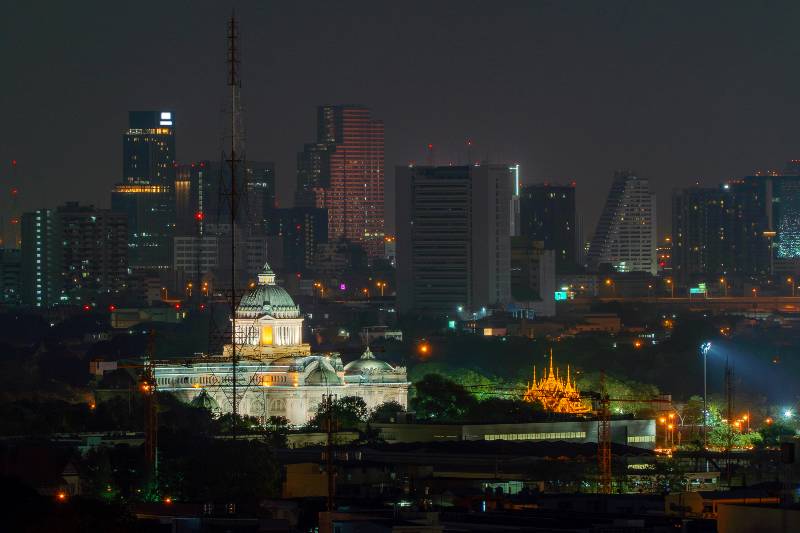
Best Museums to Visit in Thailand FAQs
What unique artifacts can I see in these museums?
You can find a variety of artifacts in the museums located throughout Thailand, including historical documents, weapons used during wars, ancient artwork and paintings, artifacts from local cultures such as Thai dance costumes and traditional musical instruments, and much more.
Are these museums open throughout the year?
Yes, these museums are usually open throughout the year except for certain holidays. However, it is best to check with the individual museum ahead of time to confirm their opening hours before visiting.
How much is the entrance fee for these museums?
The entrance fee for these museums varies depending on the museum and the type of ticket you purchase. However, most offer discounted tickets for students and seniors, so it is best to check with the individual museum ahead of time for more information.
Can I take photos in these museums?
It is usually allowed to take photos in the museums, however, it is best to check with the individual museum beforehand for any restrictions. Some museums may charge a fee for commercial photography or filming.
Are guided tours available in these museums?
Yes, many of these museums offer guided tours to visitors. It is best to check with the individual museum for more information on tour availability and cost.
Conclusion
When visiting Thailand, you can’t miss out on its impressive array of diverse and captivating museums. Whether you come for the optical illusions, the natural wonders, or the historical depictions, there’s something extraordinary about each experience that will leave an enduring impression in your mind and heart. Every museum offers a unique perspective to explore the fascinating culture and people of this expansive country. It’s an inclusive art space that caters to everyone – families, friends, couples and individuals alike – meaning everyone can find something to enjoy.
So why not take advantage of all that travel has to offer? Grab your passport and choose one (or more!) of these incredible museums today! And if you’re looking for more information about living in Thailand make sure to subscribe to our newsletter for tips and insights!
